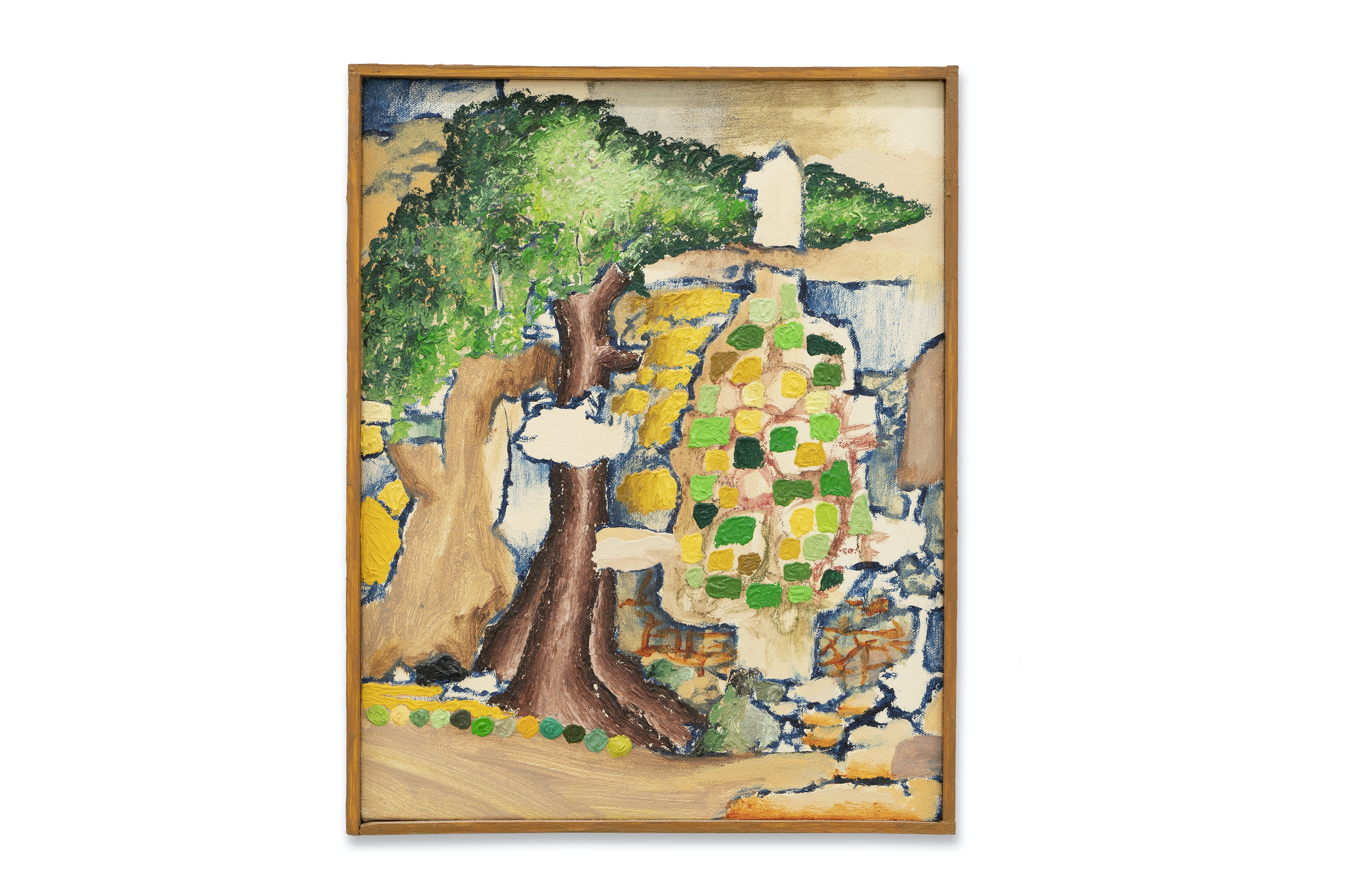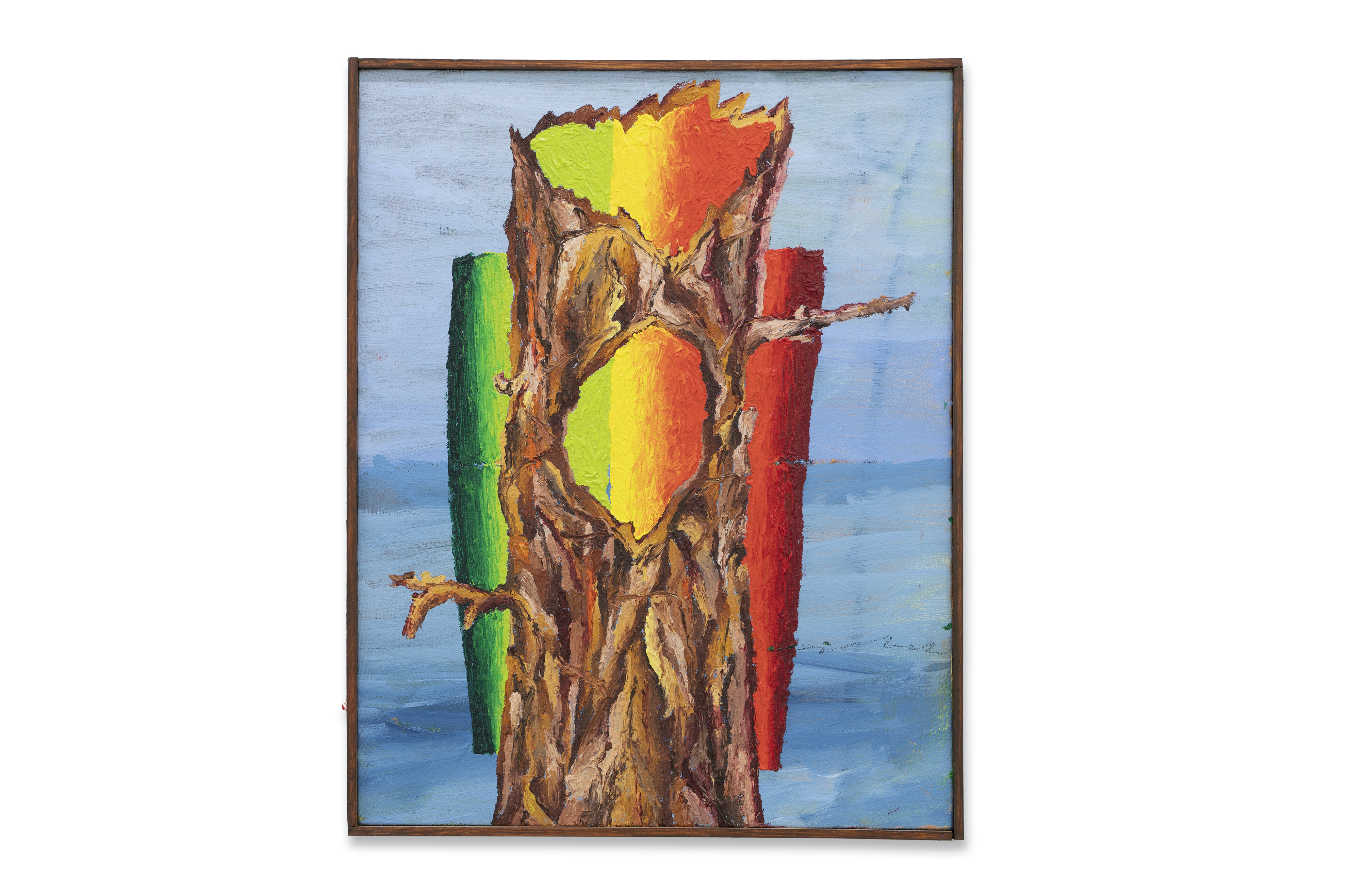
In the Morning the Night Kisses the Day Goodbye


















ROSS CALIENDO
11.13.20 - 1.13.21
Beyond the Apple and Lemon Trees
Ross Caliendo’s In the Morning The Night Kisses The Day Goodbye suggests an encounter that relies upon the mirroring of opposites and the narrativizing of a specific moment in time. In this case, the morning is paradoxically defined by the activities of the night.
The ambiguous glow of nighttime or a hazy early morning pervade Caliendo’s pictures. We are presented with this spectral gleam in paintings that make use of conventional landscape motifs such as trees, bodies of water, rocks, mountains, and cliffs. This, of course, is nothing more than a foil to Caliendo’s consistent attention to the peripheral. He revisits, with great patience, any manner of detail or surface texture that would be ordinarily considered secondary—cast-off brush, scrub, knobbled branches, cracks between stone paths or walls, and other remnants of nature.
In Caliendo’s hands, these adjacencies are seized upon within the composition and treated as grand vistas. The extravagance sneaks up on us in each of these paintings. The surprises are conveyed through impossible contrast (which appears as if it were reflected in a twisted tendril of car bumper), gradients, outlines, and color. Acid yellows, radioactive greens, and unearthly blues collide in an otherwise softened palette of browns and fleshy pinks. This coloration veers ever so carefully into Fauvist palettes with glimmers of Munch or even slap-dash touches of William Hawkins, but this largely remains refreshingly indeterminate.
The object in all of these pictures, whether it be a tree stump or a heap of broken twigs, is rendered as if it were splintered. If you can imagine the peeling bark of a birch tree that has fallen and is subsequently trampled underfoot into small linear pieces, you can easily compare that to the depictions of Caliendo’s subjects. They are like boa constrictors slowly wiggling out of their skin or a membrane film of algae brimming on the surface of a pond. Perhaps this peeling away is a form of reflection or trace, but it is never employed uniformly, it never happens in the same way twice.
Each painting displays an eerie frontality. There is a sense that either everything in the picture is toppling forward or that everything is slanted to one side or another. (Picture Duccio or Sassetta). This adds to the off-kilter feeling in these images and transmits the notion that we can pry these spaces open to reach into some kind of beyond. The conceit is that psychic space somehow crash-landed in the physical world.
The morning, day, and night all seem to possess a memory of a feeling, just as these objects of nature hold an inner life. But let’s not ignore the fact that landscape is merely a jumping-off point for painterly play, tomfoolery, and undeniable wit. Each offering an enthusiastic suplex to the sublime. Caliendo clearly revels in the nuts and bolts of putting a picture together, especially if it feels like it just may be on the verge of collapse.
-Brian Scott Campbell
Ross Caliendo (b. 1988) Pittsburgh, PA, is a visual artist living and working in Los Angeles, CA. Caliendo has recently exhibited at Penske Projects, Montecito, CA; Phil Gallery, Los Angeles, CA; Fisher Parrish Gallery, New York, NY; Blum & Poe, Los Angeles, CA; and Night Gallery, Los Angeles, CA. Caliendo has an upcoming show at GrifterSpace in New York, NY. His press includes: Wall Street International, Arazi Club Magazine, and New American Paintings.